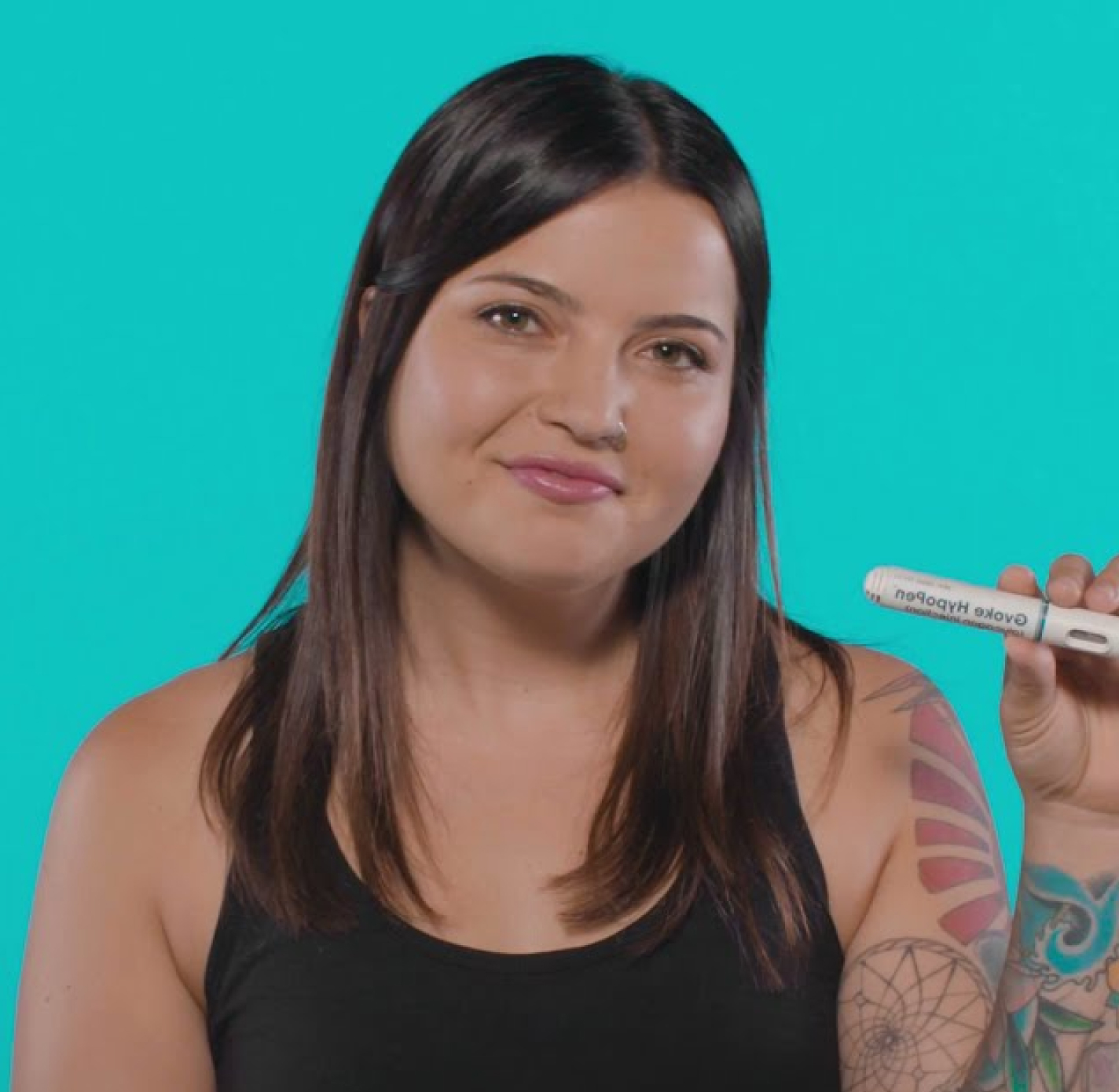Learn How To Use
Gvoke HypoPen® (glucagon injection)
Treat a severe low blood sugar event with a ready-to-use glucagon rescue pen in 2 simple steps.1,2 Become familiar with how to use Gvoke HypoPen before an emergency happens and show your relatives, close friends, or caregivers where you store it and how to use it. See full Instructions for Use.
Discover the Simple 2-Step Administration1,2


Know When To Use Gvoke HypoPen
Severe low blood sugar requires immediate attention. Gvoke HypoPen should be used if you experience any of the following during a low blood sugar emergency1:
- Correcting with food or drink isn’t working
- You are unable to swallow safely
- You feel like passing out
- You pass out or have a seizure
Because a very low blood sugar emergency requires the help of others, inform those around you about Gvoke HypoPen and its Instructions for Use.

Educate Others About
Gvoke HypoPen
It’s important that the people around you know you have Gvoke HypoPen, where to find it and how to use it. That way, they’ll be ready to help you during a low blood sugar emergency.
REFERENCES:
- Gvoke HypoPen [instructions for use]. Chicago, IL: Xeris Pharmaceuticals, Inc.
- Valentine V, Newswanger B, Prestrelski S, Andre AD, Garibaldi M. Human factors usability and validation studies of a glucagon autoinjector in a simulated severe hypoglycemia rescue situation. Diabetes Technol Ther. 2019;21(9):522-530. doi:10.1089/dia.2019.0148
Indication
GVOKE (glucagon) is a prescription medicine used to treat very low blood sugar in adults and children ages 2 years and above with diabetes.
Important Safety Information
- Do not use GVOKE if you:
-
- Have a tumor in the gland on top of your kidneys, called a pheochromocytoma because of the risk of a substantial increase in blood pressure
- Have a tumor in your pancreas called an insulinoma because of the risk of low blood sugar
- Are allergic to glucagon or any inactive ingredient in GVOKE. Stop using GVOKE and seek immediate medical attention if you experience any symptoms of a serious allergic reaction such as rash, difficulty breathing, or low blood pressure
- Before using GVOKE, tell your doctor about all the medicines you take and your medical conditions, including if you have not had food or water for a long time (prolonged fasting or starvation), have low blood sugar that does not go away (chronic hypoglycemia), or have a history of a skin rash called necrolytic migratory erythema (commonly associated with glucagon-producing tumors)
- The most common side effects reported in adults are nausea, vomiting, swelling at the injection site, and headache
- The most common side effects reported in children are nausea, low blood sugar, vomiting, headache, abdominal pain, high blood sugar, pain or redness at injection site, and hives
- Inform caregivers on the Instructions for Use of GVOKE, and symptoms of severe hypoglycemia, which include unconsciousness and seizures or convulsions
- Store in original container until time of use, and at room temperature between 68°F to 77°F (20° C to 25° C)
- You are encouraged to report side effects of prescription drugs to the FDA. Visit http://www.fda.gov/medwatch or call 1-800-FDA-1088
Please talk to your doctor and see full Prescribing Information and Patient Information Guide for GVOKE.



